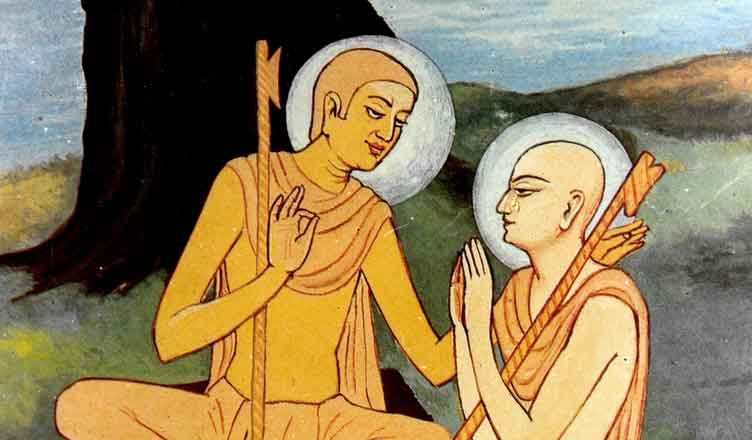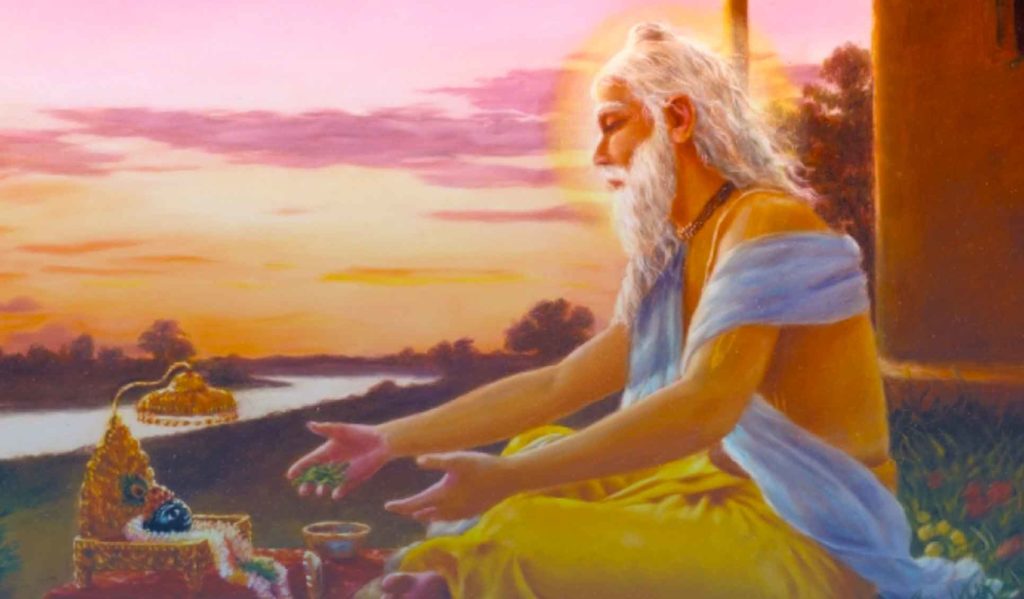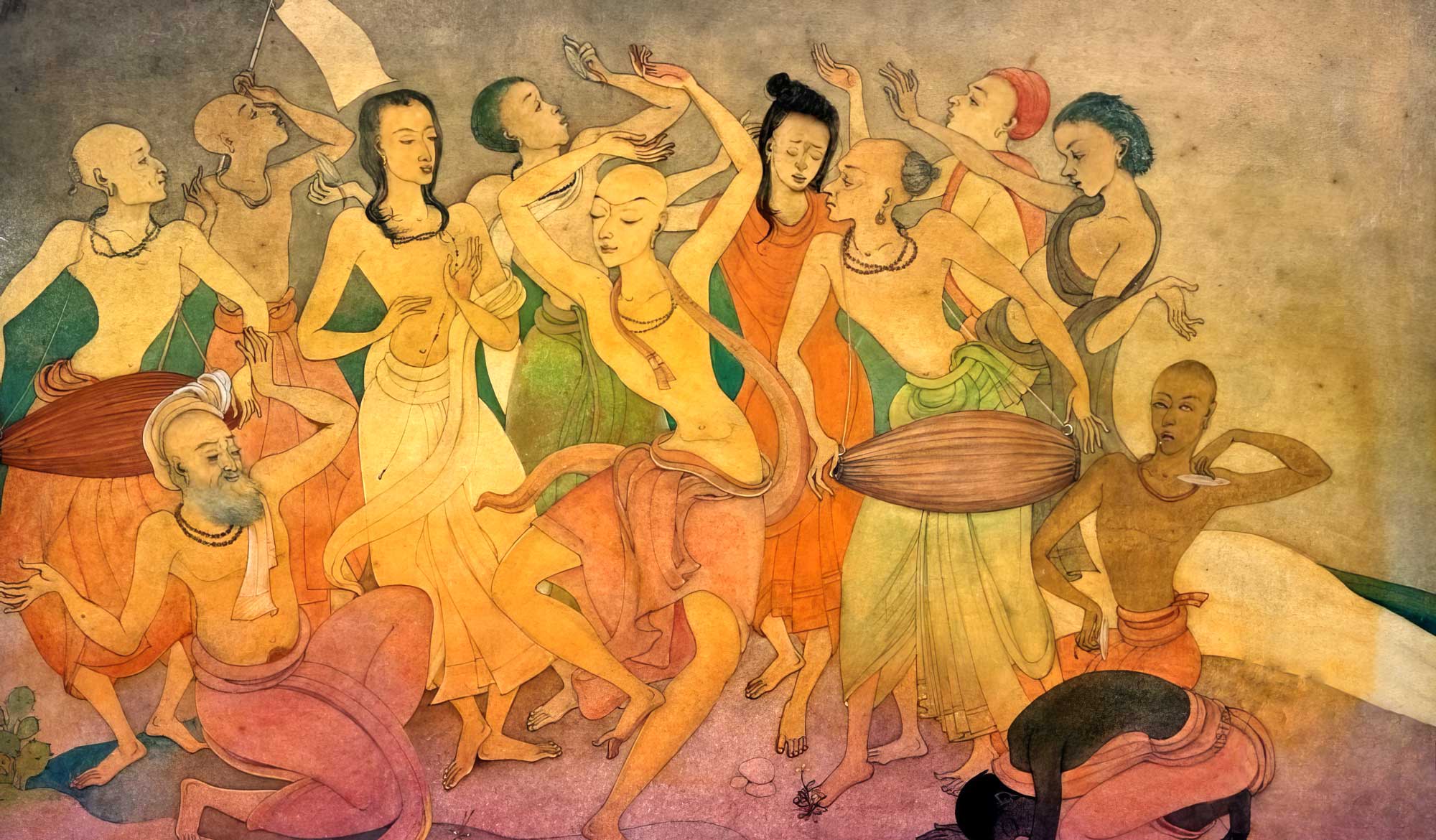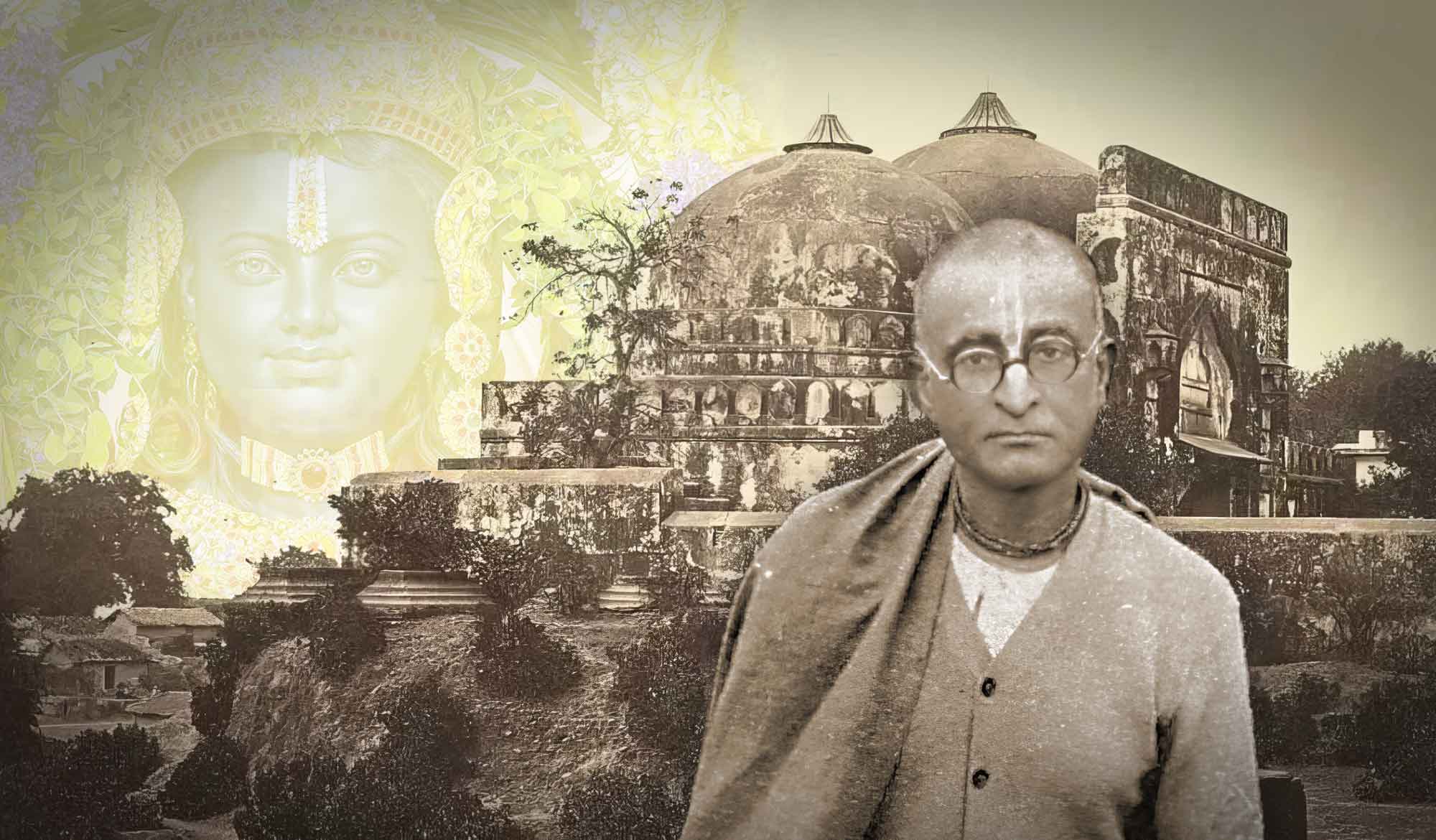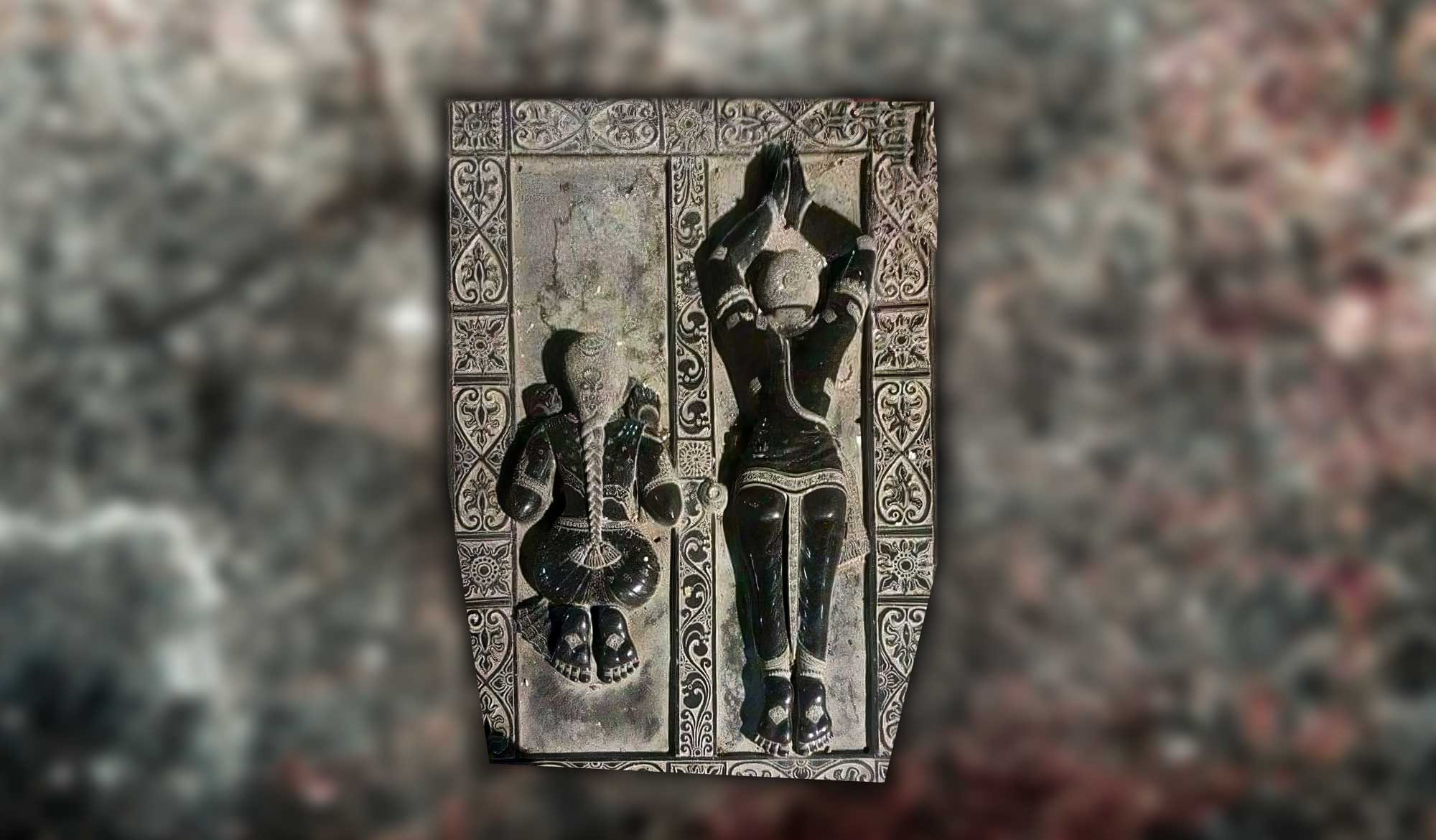Overview
Does the śāstra declare that sannyāsa is forbidden in Kali-yuga? According to one ex-sannyāsī, it is! This article explores the misconception that sannyāsa is unauthorised in this age and shows how Mahāprabhu and His followers have understood this prohibition.
In the eleventh Canto of the Śrīmad Bhāgavatam, we find the instructive story of the brāhmaṇa of Avantīpura who had previously been a miserly businessman. He was so cantankerous and prone to anger that his wife, children, relatives and servants all despised him. In due course, the avariciousness of the brāhmaṇa bore its fateful fruit. All his wealth and possessions were stolen by thieves and covetous relatives. Seeing his impoverished position, his wife and children also abandoned him. Soon a genuine feeling of renunciation awoke in the brāhmaṇa and he meditated on the temporary nature of wealth and the unnecessary problems in accumulating it such as fear, theft, violence, lying, lust, deception, anger, distrust, etc. He then concluded that he was, in fact, the fortunate recipient of the Lord’s mercy and thus formally accepted the renounced order of tridaṇḍi-sannyāsa.
In his ‘Bhiksu-gita’ (The Song of the Mendicant), the brāhmaṇa chanted the following verse:
etāṁ sa āsthāya parātma-niṣṭhām adhyāsitāṁ pūrvatamair mahadbhiḥ
ahaṁ tariṣyāmi duranta-pāraṁ tamo mukundāṅghri-niṣevayaiva
“I shall cross over the insurmountable ocean of material existence by being fixed in rendering devotional service unto the lotus feet of Lord Mukunda and by taking complete refuge in Him. This path has been approved by the great sages who were steady in devotion to the Supreme Lord.” (Bhāg.11.23.57).
This verse was chanted continuously by Śrīman Mahāprabhu immediately after accepting sannyāsa from Śrī Kesava Bharati. With the intention of going to Vṛndāvana, the Lord ran from Katwa while chanting this verse in divine ecstasy over and over again. So intense was the mood of Mahāprabhu that it has been explained by Śrīla Kavi Karṇapūra in his Caitanya-candrodaya Nāṭakam that while reciting this verse the Lord’s body became like a ball (piṇḍa-bhāvam). In other words, out of divine love for Śrī Krsna, the Lord’s limbs contracted into His body.
Śrī Caitanya Mahāprabhu greatly approved of this verse, as has been explained by Śrīla Kavirāja Gosvāmī.
prabhu kahe — sādhu ei bhikṣura vacana
mukunda sevana-vrata kaila nirdhāraṇa
parātma-niṣṭhā-mātra veṣa-dhāraṇa
mukunda-sevāya haya saṁsāra-tāraṇa
sei veṣa kaila, ebe vṛndāvana giyā
kṛṣṇa-niṣevaṇa kari nibhṛte vasiyā
“Śrī Caitanya approved of the purport of the verse (etām sa āsthāya) due to the determination of the sannyāsī to engage in the service of Lord Mukunda. He approved of the verse saying that it was excellent. The actual purpose of sannyāsa is to dedicate one’s life in the service of the lotus feet of Mukunda and by serving Him one will be liberated from the bondage of the material world.” (Cc. Madhya 3.7-9)
To dedicate one’s life completely in the service of Mukunda is the ultimate goal of all Gauḍīya Vaiṣṇavas. In particular it is the goal of the tridaṇḍi-sannyāsīs who completely surrendered their mind, body and words in the service of the Lord. In fact, the tridaṇḍa (triple staff) that is awarded to the Gauḍīya Vaiṣṇava sannyāsīs, signifies the subjugation and surrender of these three faculties.
vāg-daṇḍo’tha mano-daṇḍaḥ kāya-daṇḍas-tathaiva ca
yasyaite nihita-buddhau tridaṇḍīti sa ucyate
“One who accepts in his mind the rod of chastisement for his speech, body and mind is known as a tridaṇḍi – one who has accepted the triple staff of chastisement.” (Manu-saṁhitā 12.10)
tridaṇḍam-etan-nikṣipya sarva-bhūteṣu mānavaḥ
kāma-krodhau tu saṁyamya tataḥ siddhiḥ niyacchati
“One who disciplines the mind, speech and body and controls his lust and anger towards other living creatures and thus gives up those bad qualities is a tridaṇḍi and attains liberation.” (Manu-saṁhitā 12.11)
In this regard Śrīla A.C. Bhaktivedānta Svāmī Prabhupāda writes as follows:
“About the tridaṇḍi-sannyāsa accepted by the brāhmaṇa of Avantīpura. Indirectly He (Śrī Caitanya) declared that within the eka-daṇḍa, four daṇḍas existed as one. Accepting eka-daṇḍa sannyāsa without parātma-niṣṭhā (devotional service to Krsna) is not acceptable to Śrī Caitanya Mahāprabhu. In addition, according to the exact regulative principles, one should add the jīva-daṇḍa to the tridaṇḍa. These four daṇḍas, bound together as one, are symbolic of unalloyed devotional service to the Lord. Because the eka-daṇḍa sannyāsīs of the māyāvāda school are not devoted to the service of Kṛṣṇa, they try to merge into the Brahman effulgence, which is a marginal position between material and spiritual existence. They accept impersonal position as liberation. Māyāvāda sannyāsīs not knowing that Śrī Caitanya Mahāprabhu was a tridaṇḍi think of Him as an eka-daṇḍi sannyāsī. This is due to their vivarta, bewilderment. In Śrīmad Bhāgavatam, there is no such thing as ekadaṇḍi sannyāsa; indeed, the tridaṇḍi sannyāsī is accepted as the symbolic representation of the sannyāsa order. By citing this verse from Śrīmad Bhāgavatam, Śrī Caitanya Mahāprabhu accepted the sannyāsa order recommended in Śrīmad Bhāgavatam. The māyāvādī sannyāsīs, who are enamoured of the external energy of the Lord, cannot understand the mind of Śrī Caitanya Mahāprabhu.” (Cc. Madhya 3.6)
It is significant that after accepting sannyāsa, Śrī Caitanya Mahāprabhu chanted this verse as He ran towards Vṛndāvana. In order to actually enter the realm of Vṛndāvana, one must surrender cent-per-cent to Lord Mukunda. This is the meaning of sannyāsa and this is the meaning of parātma-niṣṭhā, or being fixed in devotional service to the Supreme Lord. When one is firmly situated in one’s resolve to take refuge in Kṛṣṇa and serve Him, one’s attention cannot be diverted by any material temptation of this mundane world. This is also known as ekāgrata, or one-pointed determination to engage in devotional service to Vrajendra-nandana Kṛṣṇa.
Śrīla Ṭhākura Bhaktivinoda confirms this in Bhakti Tattva Viveka as follows:
“The danger of disease remains up until the tender Śraddhā Devī becomes free from the influence of anarthas and transforms into nistha from being nurtured by the affectionate mother of the association of genuine devotees and from taking the medicine of bhajana. Once she has reached the stage of niṣṭhā, no anartha whatsoever can easily harm her.”
As the verse of the Avantīpura brāhmaṇa explains, “I shall cross over the insurmountable ocean of material existence and become fixed in rendering devotional service unto the lotus feet of Lord Mukunda and take complete refuge in Him.” Other processes such as jñāna, karma or yoga cannot help a sādhaka cross over the ocean of material nescience.
anyābhilāṣitā-śūnyaṁ jñāna-karmādy-anāvṛtam
ānukūlyena kṛṣṇānu- śīlanaṁ bhaktir uttamā
“Pure devotional service is the favourable cultivation of Kṛṣṇa-consciousness free from all traces of ulterior motives, such as karma, jñāna and so on.”(Bhakti-rasāmṛta-sindhu 1.1.11)
anyābhilāṣa chāḍi’ jñāna karma parihāri
kāya-mane kariba bhajana
sādhu saṅge kṛṣṇa sevā na pūjiba devī deva
ei bhakti parama kāraṇa
“Rejecting all other desires and abandoning jñāna and karma, in the company of devotees I will serve Kṛṣṇa and never worship any demigoddess or demigod. Devotional service is my all in all.” (Śrīla Narottama Dāsa Ṭhākura)
Devotional service diluted by philosophical speculation and fruitive activity (jñāna-miśra-bhakti and karma-miśra-bhakti) are not accepted as real devotion. In other words, only by parātma-niṣṭhā in pure devotional service (uttama-bhakti) can one cross over the insurmountable ocean of material existence; and attain the lotus feet of the Lord of Vṛndāvana. This is the opinion of the previous ācāryas and great sages who were ‘fixed in devotion to the Supreme Lord.’
bhava-jaladhim agādhaṁ dustaraṁ nistareyaṁ
katham aham iti ceto mā sma gāḥ kātaratvam
sarasija-dṛṣi deve tārakī bhaktir ekā
naraka-bhidi niṣaṇṇā tārayiṣyaty avaśyam
“Dear mind, do not bewilder yourself by anxiously thinking, ‘How can I cross this fathomless and impassable ocean of material existence?’ There is one person who can save you – devotion. If you offer Her to the lotus-eyed Lord, the killer of Narakāsura, She will carry you across this ocean without fail.” (Śrī Kulaśekhara Āḷvar, Mukunda-mālā 12)
Although it can be said that the stage of parātma-niṣṭhā is not limited to the sannyāsa-āśrama alone, factually it is the members of the tridaṇḍi-sannyāsa order of life that have actually dedicated their entire lives in serving the Supreme Lord. Parātma-niṣṭhā is the sole purpose of the sannyāsa-āśrama – not changing the colour of one’s cloth, over-endeavouring to become erudite in scriptural knowledge, or accumulating many disciples and followers. Such peripheral enterprises do not constitute the true meaning of sannyāsa.
Those who truly wish to attain parātma-niṣṭhā must be devoid of any sense of duplicity and expectation of reward. One who is fully surrendered can make no demand and must be prepared to relinquish all rights. He must willingly become a slave to Mukunda – to accept whatever circumstances He places before him. In actuality, one who has genuinely sold himself fully to the Lord does not even care for any rights. This is the opinion of Śrī Caitanya Mahāprabhu in the final verse of Śrī Śikṣāṣṭaka.
āśliṣya vā pāda-ratāṁ pinaṣṭu mām
adarśanān marma-hatāṁ karotu vā
yathā tathā vā vidadhātu lampaṭo
mat-prāṇa-nāthas tu sa eva nāparaḥ
“Let that debauchee embrace me in love or trample me under His feet, He may break my heart by hiding Himself from me. Let Him do whatever He likes for He will always be the Lord of my life unconditionally.” ( Śrī Śikṣāṣṭaka 8)
This verse is elaborated upon by Śrīla Ṭhākura Bhaktivinoda in Gītāvalī:
bandhu-gaṇa! śunaha vacana mora
bhāvete vibhora, thākiye jakhana,
dekhā deya citta-cora
(“O friends! Kindly hear my words. I am overwhelmed with bhāva when the thief of my heart appears to me.”)
vicakṣana kari’, dekhite cāhile,
haya āṅkhi-agocara
punaḥ nāhi dekhi’, kāṅdaye parāṇa,
duḥkhera nāhi thāke ura
(“When I try to see Him more closely, He disappears before my eyes. Losing sight of Him again, my heart weeps, and there is no limit to my misery.”)
jagatera bandhu sei kabhu more laya sātha
yathā tathā rakhu more āmāra sei prāṇa-nātha
(“Sometimes that friend of the universe takes me with Him. Whichever way He treats me, He is the Lord of my life.”)
darśana-ānanda-dāne, sukha deya mora prāṇe,
bale more praṇaya-vacana
punaḥ adarāana diyā, dagdha kare mora hiyā,
prāṇe mora māre prāṇa-dhana
(“By giving His blissful darśana, He gives happiness to my life, and He speaks loving words to me. Again, by not showing Himself, He burns my heart. In life or in death, He is the Lord of my life.”)
yāhe tā’ra sukha haya, sei sukha mama
nija sukhe-duḥkhe mora sarvadā-i sama
(“Whatever gives Him happiness, that is my happiness. My own happiness and distress are all the same.”)
bhakativinoda, saṁyoge, viyoge,
tāhe jāne prāṇīśvara
tā’ra sukhe sukhī, sei prāṇa-nātha,
se kabhu nā haya para
(“In meeting or in separation, Bhaktivinoda knows Him to be the Lord of his life. I become happy by His happiness. He is the Lord of my life, and nobody else.”)
Such is the mentality of the devotee who is fixed in rendering devotional service to the Supreme Lord.
Related Articles & Books
- 📖 The Meaning of the Sannyāsa Āśrama (Book)
- Markaṭa Vairāgī (Monkey Renunciates) by Śrīla Bhaktivinoda Ṭhākura
- Tridaṇḍi by Śrīla Bhaktisiddhānta Sarasvatī Ṭhākura
- The Colour for Sannyāsīs by Śrīla Bhakti Gaurava Narasiṅgha Mahārāja
- Bābājī Sannyāsa by Śrīla Bhakti Gaurava Narasiṅgha Mahārāja
- Sannyāsa Re-initiation by Śrīla Bhakti Gaurava Narasiṅgha Mahārāja
- Is Sannyāsa Forbidden in Kali-yuga? Swami B.V. Giri
- Parātma-niṣṭhā by Swami B.V. Giri
- Vairāgya (Renunciation) by Śrīla Bhaktivinoda Ṭhākura
- Bhek Dhāraṇa (Accepting the Dress of a Bābājī) by Śrīla Bhaktivinoda Ṭhākura
- Brahmacārī Āśrama by Śrīla Bhaktivinoda Ṭhākura
Further Reading
Pilgrimage with Swami Narasiṅgha – Part 7: Keśī Ghāṭa
Continuing with our pilgrimage series, this week Śrīla Narasiṅgha Mahārāja takes us to Keśī Ghāṭā where he tells us about Madhumaṅgala’s meeting with the Keśī demon, what Keśī represents, and how Śrīla Prabhupāda almost acquired Keśī Ghāṭa. Mahārāja also narrates his own experience. This article has been adapted from a number of talks and articles by Narasiṅgha Mahārāja.
Prema Dhāma Deva Stotram with the Narasiṅgha Sevaka Commentary – Verses 61-65
In verses 61 to 65 of 'Prema Dhāma Deva Stotram', Śrīla Śrīdhara Mahārāja narrates the pastime of Śrī Caitanya at Caṭaka Parvata In Purī and explains how the scriptures produced by Brahmā and Śiva are ultimately searching for the personality of Mahāprabhu who is merciful too all jīvas, no matter what their social position.
Prabhupāda Śrīla Sarasvatī Ṭhākura’s Visit to Ayodhyā
With the forthcoming observance of Śrī Rāma Navamī, we present 'Prabhupāda Śrīla Sarasvatī Ṭhākura’s Visit to Ayodhyā' written by Śrīla Bhaktisiddhānta Sarasvatī Ṭhākura Prabhupāda from The Gaudīyā magazine, Vol 3. Issue 21/ In December 1924, after visiting Benares and Prāyāga, Sarasvatī Ṭhākura visited the birth-site of Śrī Rāmācandra in Ayodhyā.
Śaraṇāgati – The Only Path to Auspiciousness
In this article, 'Śaraṇāgati - The Only Path to Auspiciousness', Dhīra Lalitā Dāsī analyses the process of śaraṇāgati (surrender) beginning with śraddhā (faith). She also discusses the role of śāstra and the Vaiṣṇava in connection with surrender.
Pilgrimage with Swami Narasiṅgha – Part 7: Keśī Ghāṭa
Continuing with our pilgrimage series, this week Śrīla Narasiṅgha Mahārāja takes us to Keśī Ghāṭā where he tells us about Madhumaṅgala’s meeting with the Keśī demon, what Keśī represents, and how Śrīla Prabhupāda almost acquired Keśī Ghāṭa. Mahārāja also narrates his own experience. This article has been adapted from a number of talks and articles by Narasiṅgha Mahārāja.
Prema Dhāma Deva Stotram with the Narasiṅgha Sevaka Commentary – Verses 61-65
In verses 61 to 65 of 'Prema Dhāma Deva Stotram', Śrīla Śrīdhara Mahārāja narrates the pastime of Śrī Caitanya at Caṭaka Parvata In Purī and explains how the scriptures produced by Brahmā and Śiva are ultimately searching for the personality of Mahāprabhu who is merciful too all jīvas, no matter what their social position.
Prabhupāda Śrīla Sarasvatī Ṭhākura’s Visit to Ayodhyā
With the forthcoming observance of Śrī Rāma Navamī, we present 'Prabhupāda Śrīla Sarasvatī Ṭhākura’s Visit to Ayodhyā' written by Śrīla Bhaktisiddhānta Sarasvatī Ṭhākura Prabhupāda from The Gaudīyā magazine, Vol 3. Issue 21/ In December 1924, after visiting Benares and Prāyāga, Sarasvatī Ṭhākura visited the birth-site of Śrī Rāmācandra in Ayodhyā.
Śaraṇāgati – The Only Path to Auspiciousness
In this article, 'Śaraṇāgati - The Only Path to Auspiciousness', Dhīra Lalitā Dāsī analyses the process of śaraṇāgati (surrender) beginning with śraddhā (faith). She also discusses the role of śāstra and the Vaiṣṇava in connection with surrender.


